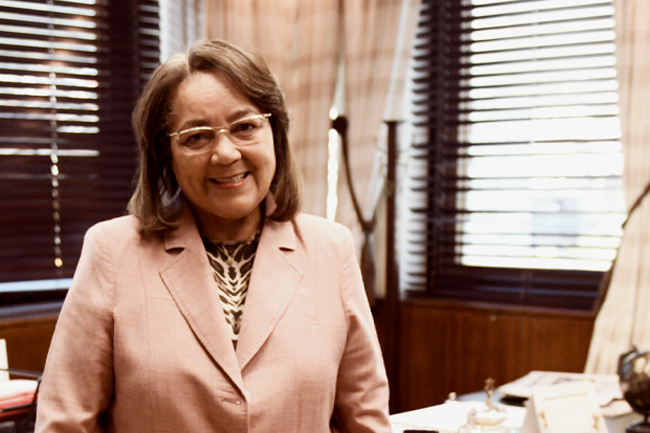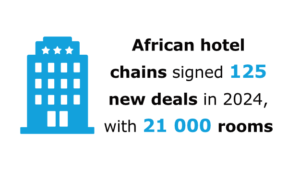At its essence the Department of Public Works and Infrastructure (DPWI) is about people, and how the development of infrastructure best benefits the population, be that socially or economically. All of the department’s projects are therefore considerate of job creation and poverty alleviation, even more so since Patricia de Lille took office as its Minister in 2019.
De Lille strongly endorses the mantra of ‘public land for public good’, which has seen her approve the release of 14 105 ha of land for human settlements, packaged into hundreds of parcels. These parcels of land are in addition to other parcels of land that have been – or are due to be – released and directed at agriculture and addressing land restitution, redistribution and land tenure, many of which will (and in some cases have) become shelters for victims of gender-based violence.
Also on De Lille’s shoulders falls the responsibility of finalising the Expropriation Bill, for which she established a ministerial reference group to advise her before the bill is to reach Cabinet later this year. But COVID-19 has forestalled this event, with the DPWI being required to respond urgently to the need for quarantine facilities.
State-owned hotels, houses, multipurpose centres and hospitals were identified, enough to accommodate 109 000 patients under quarantine. As the country moved into Level 4 of disaster management, critical public works programmes were pushed to the top of the DPWI’s priority list as a percentage of the construction sector returned to perform crucial activities, many of which will provide communities with access to services.
Safe access to services is something the DPWI has been massively promoting through its National Rural Bailey Bridges Intervention programme. ‘This bridge-building project is about providing rural communities safe access to basic services such as schools, clinics, police stations and other such services, and which also stimulates their participation in economic opportunities,’ says De Lille.
A Bailey bridge is a WWII modular design that has portable, pre-fabricated truss properties, requires no special tools or heavy-assembly equipment, and is incredibly quick to erect.

‘To date, 28 Bailey bridges have been constructed in areas where flooding, strong rainfall and overall inclement weather conditions have destructively and sadly caused communities to be isolated, and loss of life has been the most devastating impact. I refuse to accept that projects like this, which are so needed, can take years to complete, so we are upscaling this project to improve access to many communities in need,’ says De Lille.
‘This intervention is not just about building a bridge – it’s about connecting people, building integration, overcoming obstacles, and undoing the spatial planning legacy of the past.’
Reversing apartheid spatial planning is a massive focus for the DPWI. ‘Stopping urban sprawl and building compact, mixed-use developments will also bring communities closer to government services by using state-owned property and land as a catalyst for public good,’ she says.
The Planning and Precinct Development initiative guides this transformation programme, with a goal of creating destinations that have a live-work-play profile. It’s a complicated process involving communities, private-property owners, business and retail facilities, and institutional structures such as schools, churches, daycare and other community-based stakeholders.
Support services from other government organs are essential collaborators, including municipalities, the departments of Human Settlements and Home Affairs, and city management. ‘The Planning and Precinct Development initiative brings about regeneration and sustainability benefits for cities because they are inclusive and, again, this addresses accessibility for residents,’ says De Lille. These public-friendly environments reflect the DPWI’s intention to make all government buildings more conducive to public interaction; places where service delivery excellence can be experienced.
‘We’ve started with a courts-maintenance programme and will expand the programme to include police stations, Home Affairs offices and other government service buildings. After lockdown, I will be visiting other similar infrastructure projects that have been stalled, such as schools, to ensure we can improve on implementation,’ she says.
Implementation is one of two challenges the department faces. The other is facilities management. De Lille says while the key downfall in implementation is project planning and preparation, in terms of facilities management it is overcoming the multiple needs of all user departments that hamper service delivery. Both these challenges are being addressed because De Lille is of the mind that the principle of Batho Pele – putting people first – must be applied.
‘Being a public servant means working with the needs of the people first and foremost. We need to satisfy them that government buildings deliver service, are conducive, and are decent and friendly. And a particular passion of mine is looking at how we can retrofit all government buildings with PV panels, so that we address the electricity crisis, and generate and use our own clean energy.’

But what of those buildings that aren’t ‘decent’ or currently occupied? De Lille says that a strategic decision to lease such government properties to the private sector, currently some 1 232, has mutual benefits that include job creation, revenue generation, skills transfer, capital value (given the rental structure and economic spin-offs to the local area), a contribution to GDP and benefits to SMEs on the procure of goods and services.
Another focus area that also provides for letting opportunities is South Africa’s harbours. More than 330 state coastal properties are currently being leased out. Taking this further is the DPWI’s Small Harbours and State Coastal Property Development Unit (SHDU), which is also overseeing the development, maintenance, integration and upgrade of harbours in the Western, Northern and Eastern Capes, and KwaZulu-Natal.
‘Small harbours are seen as an economic catalyst for many coastal communities,’ she says. ‘They also address Operation Phakisa: Oceans Economy, and build on the work that other initiatives undertake, such as skills development, infrastructure-build programmes and harbour revitalisation. New harbours are to be built over the coming three years, and further feasibility studies will highlight the type of infrastructure that is required at these, guided through the demand and type of relative economic activities. The SHDU is also undertaking a repair programme of 12 proclaimed fishing harbours in the Western Cape that will bring about improved functioning, enough to attract private-sector investment and motivate for a regional coastal hub.’
This, and all the other projects under the DPWI, will be energising the Expanded Public Works programme, a nationwide government-led initiative that has the goal of providing work opportunities and income support to poor and unemployed people through the delivery of public and community assets and services. It is aimed particularly at the youth and women, says De Lille.
‘Through the DPWI we recruited 909 youths, 590 of whom are women, to be trained in artisan-related trades over the course of a year. We are also awarding bursaries on an annual basis to matriculants to continue their studies at universities, specifically to advance in various built-environment fields.’
To date, 298 countrywide bursaries have been awarded over six years, providing the state with a pool of qualified property and built-environment professionals. De Lille confirms that of the 145 who have graduated, 87 are participating in the DPWI Young Professionals programme. Another 30 will be joining them later this year. The balance have taken up opportunities in the private sector.
This and similar projects have elevated the DPWI’s reputation among its counterparts across Africa. The department works co-operatively with Ethiopia, Kenya, Mauritius, Mozambique, Tanzania, Uganda and Zambia (and has hosted a number of delegations inclusive of Malawi, Ghana, Liberia and Algeria) to help further the infrastructure and public works needs of the continent. In Mauritius, for example, the DPWI is exchanging information on building-code standards; in Uganda, there are technical exchanges and study tours; and, similarly in Zambia, there is an interest in learning from South Africa’s built environment.
The goals for all are endless but ultimately, says De Lille, her major focus remains solidly on ensuring that all South Africans can be connected to the delivery of services. ‘After all, it is the citizens who ultimately own the buildings and land under our management. Our mandate is therefore not just relative to the formal structure of land or buildings but to ensure that they are used for public good.’
















